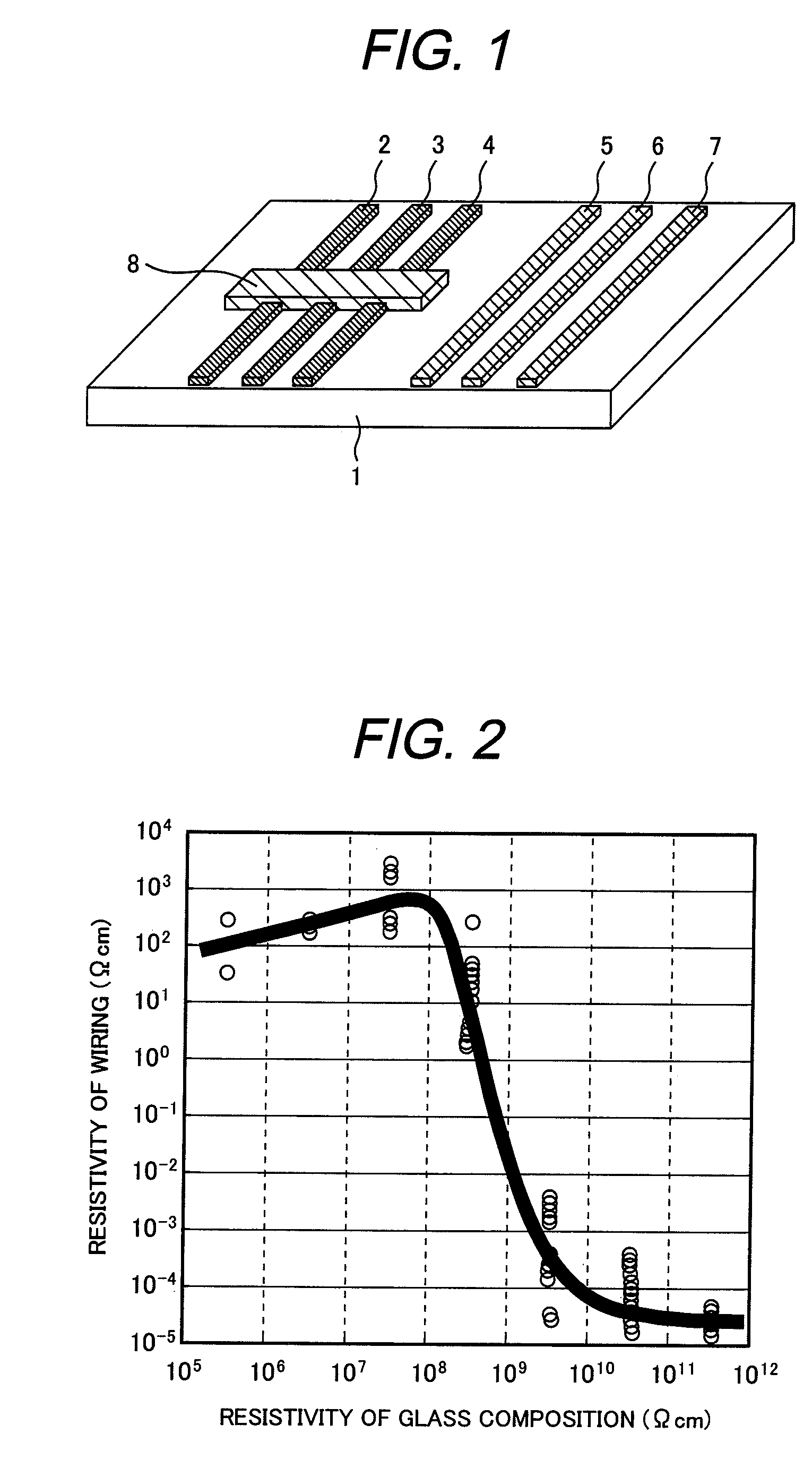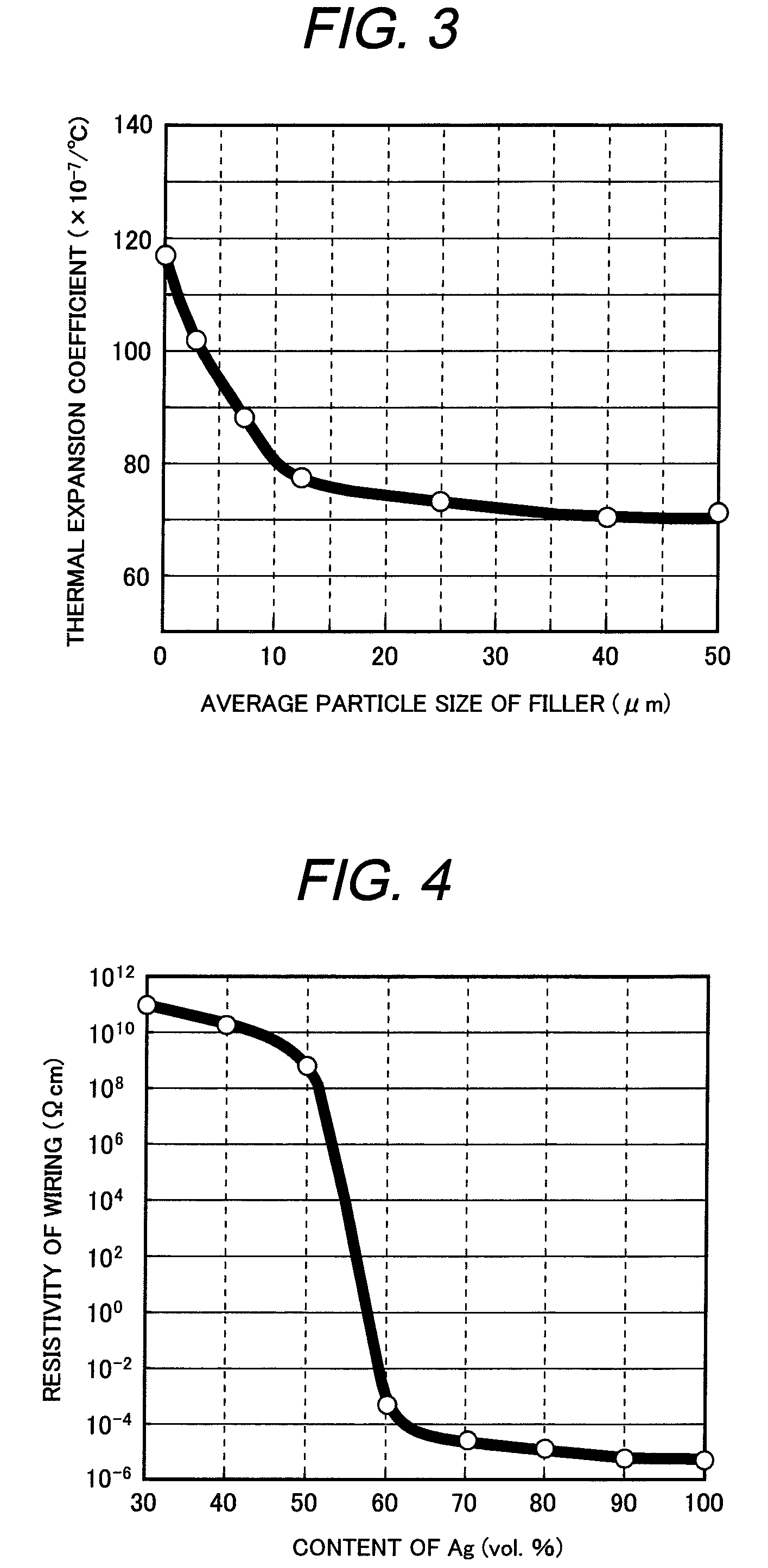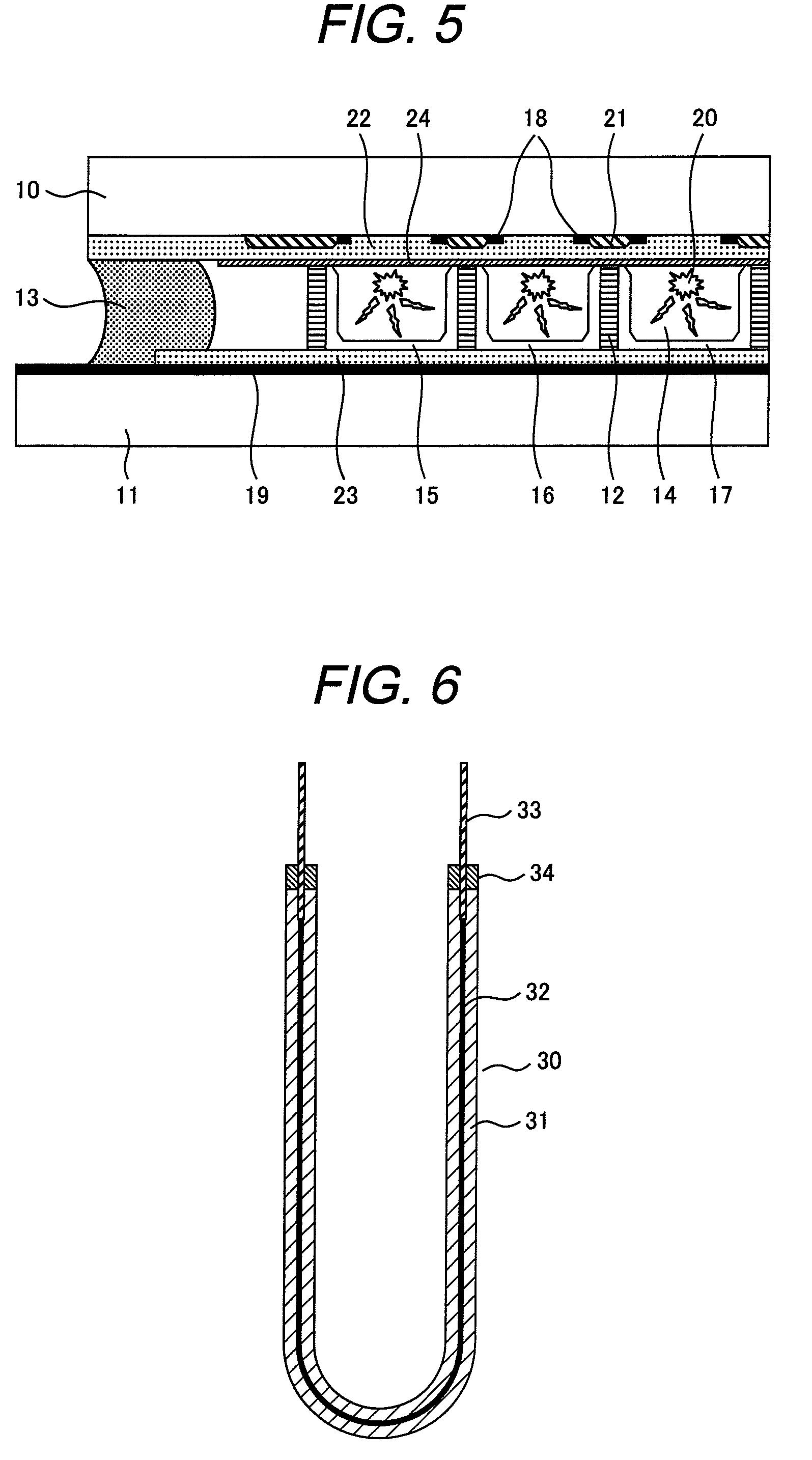Glass composition and its applications
a technology of glass composition and glass plate, applied in the field of glass plate, can solve the problems of changing the electric resistivity at the sealing position, the effect of low and practical temperatur
- Summary
- Abstract
- Description
- Claims
- Application Information
AI Technical Summary
Benefits of technology
Problems solved by technology
Method used
Image
Examples
example 1
[0063]Glass compositions according to the present invention, which can be softened at low temperatures, were prepared. Tables 1-1, 1-2 and Tables 2-1, 2-2 show glass compositions and characteristics of the glass compositions, sintered glass compositions, and sintered silver wiring materials.
[0064]The compositions are shown by weight percent on the basis of conversion of metal oxides. The glass compositions are free from lead oxide and bismuth oxide, but contain vanadium oxide and phosphor as main ingredients.
[0065]As other ingredients, various ingredients such as alkali metal oxides and alkaline earth metal oxides (oxides of lithium, sodium, cesium, and barium) were added. As raw materials (starting materials), vanadium oxide, phosphor oxide, carbonate salts of barium, lithium, sodium and cesium were employed. As barium oxide, barium phosphate (BaPO3) may be used instead of barium carbonate. In this case an amount of phosphor oxide is calculated by taking into consideration of the B...
example 2
[0087]As same as example 1 and using the information acquired in example 1, glass compositions shown in Table 3 were prepared and they were evaluated. Table 3 shows the glass compositions and characteristics of sintered glass of the glass composition. None of the glass compositions contain lead oxide and bismuth oxide, but main components were vanadium oxide and phosphor oxide. As other ingredients, oxides of manganese, barium and alkali metals were added. 2 to 4 components of tellurium oxide, zinc oxide, niobium oxide, iron oxide, tungsten oxide and molybdenum oxide were added.
[0088]
TABLE 3Glass matrix composition (% by weight)ResistivityResistivityOther elementSofteningof glassof Ag wiringAg wiringNo.V2O5P2O5MnOBaONa2OK2OZnOWO3oxidespoint (° C.)(Ωcm)(Ωcm)evaluation6240.025.010.010.02.03.05.05.0443109 order10−4 order◯6335.025.08.010.01.02.09.05.0MoO3 5.0438109 order10−5 order⊚6435.025.010.010.02.03.010.05.0444109 order10−5 order⊚6535.025.05.010.02.03.08.07.0Fe2O3 5.0448109 order10−...
example 4
[0101]In example 4, kinds of filler powders to be added to the glass compositions and contents were investigated. Used fillers were powders of β-eucryptite, mullite, amorphous silica, alumina, zirconium silicate and zirconium phosphate. An average particle size of the filler powders was 20 to 30 μm. An average particle size of the glass powder was 5 to 10 μm.
[0102]The glass compositions and filler powders were mixed to prepare pastes in the same manner as in example 1. The pastes were coated on a glass substrate, dried and heated to 480° C. for 30 minutes in air to form glass thick films. Flowability and devitrification in the sintering process were evaluated. Contents of the filler powder were changed from 10, 20, 30, 40 and 50 volume %. It has been revealed that the glass compositions did not devitrify until an amount of filler powder became 40% by volume in any filler powders. When the amount was 50% by volume, devitrification took place and airtight sealing was impossible to obt...
PUM
| Property | Measurement | Unit |
|---|---|---|
| resistivity | aaaaa | aaaaa |
| softening point | aaaaa | aaaaa |
| resistivity | aaaaa | aaaaa |
Abstract
Description
Claims
Application Information
 Login to View More
Login to View More - R&D
- Intellectual Property
- Life Sciences
- Materials
- Tech Scout
- Unparalleled Data Quality
- Higher Quality Content
- 60% Fewer Hallucinations
Browse by: Latest US Patents, China's latest patents, Technical Efficacy Thesaurus, Application Domain, Technology Topic, Popular Technical Reports.
© 2025 PatSnap. All rights reserved.Legal|Privacy policy|Modern Slavery Act Transparency Statement|Sitemap|About US| Contact US: help@patsnap.com



